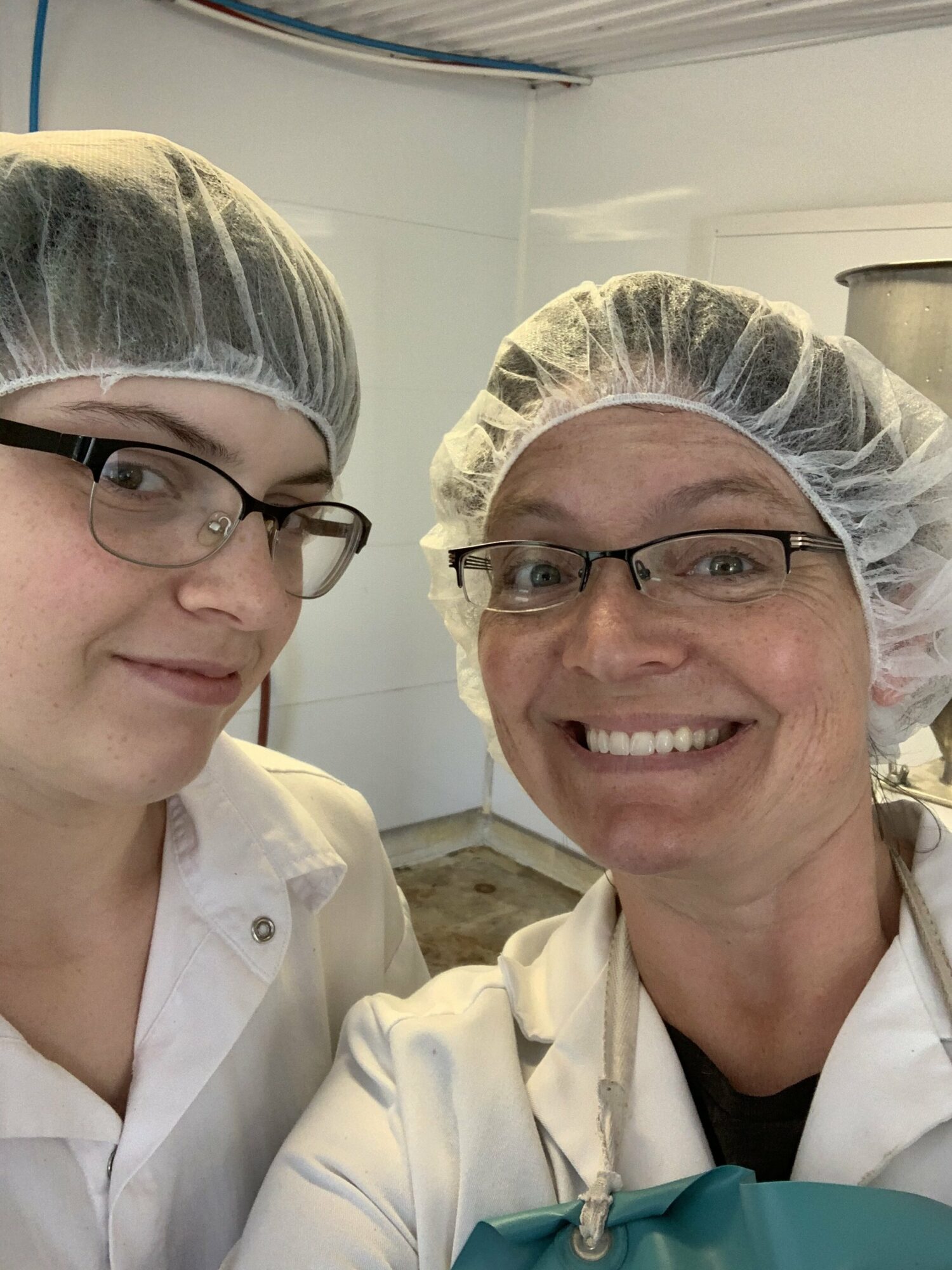Summer is by far our busiest season on the farm. We’re raising chickens on pasture for area restaurants, small stores, and farmer’s market customers. We’re making cheese (almost) every day of the week in our dairy processing plant. And because everyone is trying to support local businesses during these difficult times, it has actually been a challenge to keep up with demand! The vast majority of small farmers and food producers that I know and chat with regularly are all finding themselves dealing with a similar, yet welcome problem: keeping up. If you’ve been looking for a silver lining during this global pandemic, “loving local” is unquestionably helping small producers like us.
Our gelato business has been particularly brisk this year. Sales have more than doubled over last year, and we have had to make adjustments in our make schedule and processes to keep up with demand. But what we do and how we do it seems to be a real mystery to most folks.
Making gelato is a family affair!
Our gelato starts with the morning milking at a friend’s dairy farm. Four cows are lead into the milking parlor at a time, as the hum of the compressor and the swishing of the tails fill the air. The girls are happy to get their treats, moving slowly but deliberately in line and to their spaces in the parlor. They know exactly what to expect and even seem to enjoy their daily routine, something their farmers have performed religiously for decades.
Each udder is washed and wiped clean; a teat here or there is stripped to test milk quality. Before long, the milk is flowing and pumped into gleaming stainless steel cans, foam billowing above their brims. The barn cats know the routine well, too, and begin to swarm as they wait for their bowls to be filled. The milkhouse is steamy from washing and the sweet, heady aroma of dairy saturates your hair and clothes. (If you’ve ever been in a dairy barn or poked your nose in the milkhouse during milking, you know exactly what I mean!)
The magic of all dairy begins right here. I wish more people could experience it; I wish more people appreciated and valued it. What most consumers find on grocery store shelves is so far removed from the source, it hardly resembles dairy anymore. Jugs of milk and cartons of heavy cream have been extracted from the whole, a pale and sad substitute for the real deal. Don’t quite believe me? Consider the extreme pleasure of a freshly squeezed glass of orange juice from beautiful, ripe oranges and how that compares to orange juice made from concentrate. All the same ingredients are there, even all the vitamins and minerals. But the freshness is lost; the flavor gone. One is bland while the other is alive with compounds that fade with time. Milk is no different: homogenization and high temperature pasteurization strips milk of its freshest flavor compounds.
Once our stainless steel cans are filled, they make the short drive back to our farm. Steaming hot, the milk is gently poured into our vat pasteurizer. We add ingredients to make our base, including egg yolks and sugar. The paddle is put in place to stir the mix and the chart recorder is started. Multiple heating elements slowly increase the temperature of the jacket while steam is pumped over the surface of the milk. The mix must be pasteurized at 155° for 30 minutes, but we increase the temperature to nearly 180° to make a crème anglaise, or custard. But we have to be careful…eggs will scramble if the mix gets too hot!
After pasteurization is complete, the mix must be cooled. Cold water is circulated through the vat’s jacket, all while the paddle continues to stir the contents. Just a few short hours after getting fresh, raw milk, we have a mix ready to churn into gelato. But for the mix to properly set, it must “cure” overnight in our walk-in cooler.
The very next day, we prepare the flavorings and labels, and set up the equipment to churn and freeze the mix. We have a 24-quart batch freezer, much larger than your typical tabletop ice cream maker. But the concept is very much the same, of course. The flavored gelato mix is poured into a barrel that slowly freezes while beaters churn and scrape the mix from the sides. Some air is churned into the mix as it freezes. In fact, the speed of the beaters will determine the density of the end product. Once the mix is frozen, we use a machine we affectionately call “Mr. Squirter” to fill 8 ounce cups that then quickly go into our blast freezer. Less than 48 hours after milking, we have gelato from cow to cone!
Gelato Base Recipe:
3.5 cups non-homogenized (“creamline”) milk from a local farmer (try Grassy Cow Dairy in Remsen or Stoltzfus Family Dairy in Vernon)
¾ cup cane sugar
5 large egg yolks
¼ cup invert sugar, honey, or corn syrup
Mix all ingredients thoroughly. Heat and gently stir mixture in a pot over low heat until 175°. Strain into bowl, cover with plastic wrap, and refrigerate overnight. Add your favorite flavorings and freeze in your tabletop ice cream maker the next day!
